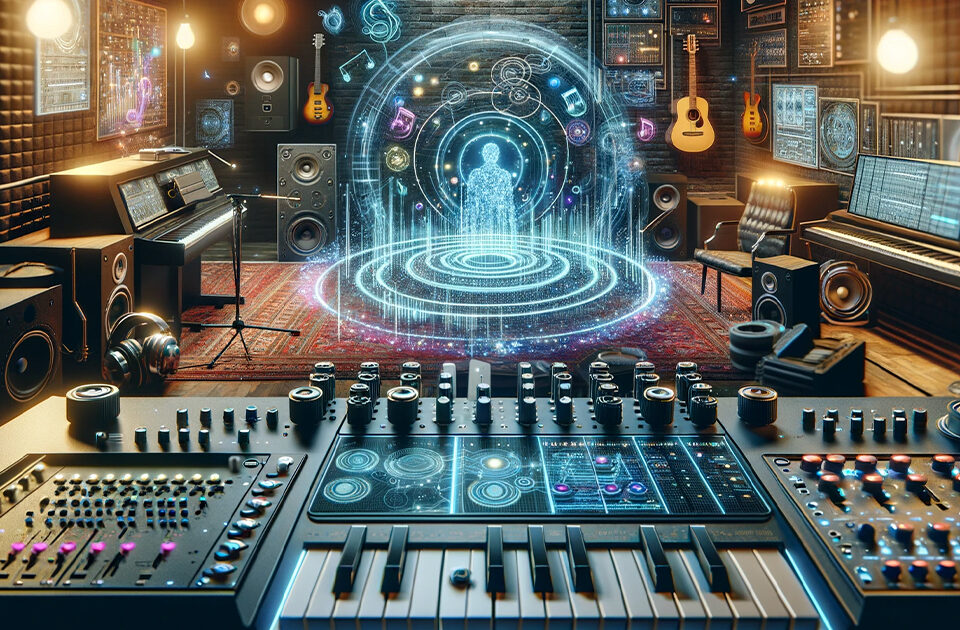MIDI and Virtual Instruments – Transforming Music Production
Musical Instrument Digital Interface (MIDI) technology and virtual instruments have brought about a significant transformation in the realm of music production over the past few decades. MIDI has emerged as a pivotal element in contemporary music creation, enabling musicians and producers to connect instruments, controllers, and computers, thus streamlining the creative process. This article aims to provide an overview of MIDI technology, explore the world of virtual instruments, and shed light on how these powerful tools can be harnessed to create and produce music.
MIDI Technology – An Introduction
MIDI, a standard protocol for digital communication among musical instruments and computers, was introduced in 1983. MIDI does not transmit audio signals; instead, it sends and receives digital data that represents various musical parameters, such as pitch, velocity, and duration of a note. The advent of MIDI has facilitated the seamless integration of synthesizers, drum machines, and other electronic musical instruments with computers, thereby simplifying the process of composing, recording, and editing music.
Understanding MIDI Messages
MIDI messages are the backbone of the MIDI protocol, as they convey vital information between devices. These messages can be broadly categorised into three types:
1. Channel messages: These messages pertain to a specific channel (1-16) and typically include note-on, note-off, and control change messages.
2. System messages: These messages encompass system-exclusive, system-common, and system-real-time messages that provide universal control and synchronization across devices.
3. System-exclusive messages: These messages are unique to specific manufacturers or devices, enabling advanced device control and customisation.
Virtual Instruments – The New Age of Sound Creation
Virtual instruments, also known as software synthesizers or soft-synths, are computer programs that generate or replicate sound. Virtual instruments can mimic acoustic instruments, such as pianos and guitars, or create entirely new sounds that push the boundaries of music. The diverse range of virtual instruments available today has empowered musicians to produce rich, textured, and complex compositions without the need for expensive hardware or studio space.
Types of Virtual Instruments
Virtual instruments can be broadly classified into the following categories:
1. Sample-based instruments: These instruments rely on pre-recorded audio samples to generate sound, often providing realistic emulation of acoustic instruments.
2. Synthesis-based instruments: These instruments use various synthesis techniques, such as subtractive, additive, and wavetable synthesis, to create and shape sounds.
3. Modelling-based instruments: These instruments utilise algorithms that emulate the physical properties of acoustic instruments, resulting in a more authentic sound.
Harnessing Virtual Instruments for Music Creation and Production
Incorporating virtual instruments into your music production workflow can be achieved through the following steps:
1. Choose a digital audio workstation (DAW): A DAW serves as the central hub for recording, editing, and producing music. Popular DAWs include Ableton Live, FL Studio, and Logic Pro.
2. Install and configure virtual instruments: Most virtual instruments are available as plug-ins, which can be installed within your DAW. Ensure that your DAW recognises the plug-ins and configure the settings as per your preferences.
3. Integrate MIDI controllers: MIDI controllers, such as keyboards and drum pads, can be used to play virtual instruments. Connect your MIDI controller to your computer and configure the settings within your DAW.
4. Record and edit MIDI data: With your virtual instruments and MIDI controller set up, you can record and edit MIDI data to create and arrange your music.
5. Mix and master your tracks: After recording and arranging your music, you can mix and master your tracks using various effects and processing tools available within your DAW. This process involves balancing the volume levels, adjusting the tonal balance, and adding effects such as reverb, compression, and equalization to enhance the overall sound.
The Advantages of Virtual Instruments
Virtual instruments offer numerous benefits that have made them an indispensable tool in modern music production:
1. Cost-effective: Virtual instruments are generally more affordable than their hardware counterparts, making them accessible to a wider range of musicians and producers.
2. Flexibility: With countless virtual instruments available, musicians can explore a vast range of sounds and styles, expanding their sonic palette and creative possibilities.
3. Portability: As virtual instruments are software-based, they can be easily transported and used on different computers, eliminating the need for bulky hardware.
4. Ease of use: Virtual instruments can be easily integrated with DAWs, allowing for a seamless workflow and more efficient music production process.
Challenges and Limitations of Virtual Instruments
Despite the numerous advantages, virtual instruments do have some limitations:
1. Learning curve: Some virtual instruments may have complex interfaces and features, requiring time and effort to master.
2. System requirements: High-quality virtual instruments may demand significant processing power and memory, potentially causing performance issues on older or less powerful computers.
3. Authenticity: While many virtual instruments strive to emulate acoustic instruments accurately, some may not perfectly replicate the nuances and expressiveness of their real-world counterparts.
Summary
MIDI technology and virtual instruments have undoubtedly revolutionized music production, providing musicians and producers with a powerful and accessible means to create and produce music. By understanding the basics of MIDI technology and harnessing the potential of virtual instruments, musicians can craft intricate, expressive, and unique compositions that transcend traditional boundaries.


